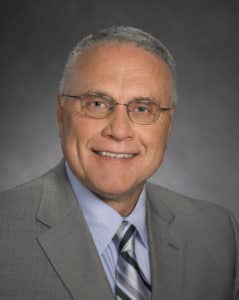Suffering from Elbow Pain?
Tennis elbow, formally known as lateral epicondylitis, is a very common and painful musculoskeletal condition affecting the elbow due to overuse. Tennis elbow is caused by an inflammation of the tendons that join the forearm muscle on the outside of the elbow. The forearm muscles and tendons become damaged from repetitive motions, resulting in pain and tenderness on the outside of the elbow.
Causes
Typically, the most frequent causes of tennis elbow are from participating in activities, such as golf and racquet sports in which the forearm is involved in repetitive motions. Also, certain occupations including painters, mechanics and carpenters are at a higher risk for developing tennis elbow.
The elbow joint is made up of three bones, which include the upper arm bone (humerus) and two bones in the forearm (radius and ulna). At the bottom of the humerus, are bony bumps called epicondyles. More specifically, the bony bump on the lateral side of the elbow (outside) is called the lateral epicondyle.
The elbow joint is held together by a network of muscles, ligaments and tendons. Tennis elbow involves the muscles and tendons of the forearm, which straighten the wrist and fingers. The tendons in the forearm attach muscles to bone, including attaching to the lateral epicondyle. The tendon typically involved in tennis elbow is called the Extensor Carpi Radialis Brevis (ECRB).
According to the American Academy of Orthopaedic Surgeons (AAOS), studies show that tennis elbow is often due to damage to a specific forearm muscle, typically the ECRB. When the ECRB is weakened from extensive overuse, microscopic tears develop in the tendon where it attaches to the lateral epicondyle, and most commonly results in pain and inflammation.
The Orthopaedic Institute’s Rodger D. Powell, M.D., a board certified orthopaedic surgeon, specializes in hand and upper extremity musculoskeletal injuries, and sees up to 12-15 patients a week who suffer from tennis elbow.
“Patients range in age from the 20’s to even the 80’s as boomers strive to remain fit and active,” Dr. Powell said.
Symptoms
Symptoms of tennis elbow gradually develop, initially beginning as a mild pain that worsens over an extended period of time. Symptoms of tennis elbow include, but are not limited to:
- Pain or burning on the outer part of the elbow
- Weak grip strength (such as having difficulty picking up a jug of milk or holding a cup of coffee)
- Pain radiating into the shoulder or down into the forearm
Treatment
Tennis elbow treatments include both non-surgical and surgical approaches, depending on the severity. Non-surgical treatments are the first step in an effort to correct tennis elbow. Approximately 80 to 95 percent of patients have success with non-surgical treatments including:
- Rest
- Non-steroidal anti-inflammatory medicines (aspirin or ibuprofen to reduce pain and swelling)
- Equipment checks (having equipment examined to ensure proper fit)
- Physical therapy (including stretching, massage or muscle-stimulating techniques to improve muscle healing)
- Wearing a brace
- Injections (including cortisone and prolotherapy)
Patients whose condition is unresponsive to six or more months of non-surgical treatment are candidates for surgery. Most procedures include removing the diseased muscle and reattaching healthy muscle back to the bone. Your physician will determine if surgical treatment is the best option for relief after exhausting all other non-surgical options.
One surgical option known as the Nirschl approach, is a simple surgical procedure that Dr. Powell typically recommends to patients.
“It’s a simple operation where you find the origin of the ECRB and cut the tendon from the bone,” Dr. Powell said.
The damaged portion of the ECRB is removed and any damage to the surrounding tendons is then repaired, allowing immediate use of the arm for light activity. After the surgery, in an effort to avoid reoccurring episodes of tennis elbow, patients are frequently placed on a recommended home exercise program.
Preventative actions that patients can take in order to avoid developing tennis elbow include maintaining upper extremity strength and flexibility, Dr. Powell said.

Dr. Powell is Board Certified in Orthopaedic Surgery with additional qualifications in Hand Surgery. Dr. Powell attended medical school at the University of Florida College of Medicine, where he also completed his residency in Orthopaedic Surgery followed by fellowship training in Hand Surgery at Indiana Center of Surgery and Rehabilitation of the Hand. Dr. Powell joined The Orthopaedic Institute in 1984 and is an active member of the American Academy of Othopaedic Surgeons and the American Society for Surgery of the Hand. He spends his free time with his wife and three daughters.

